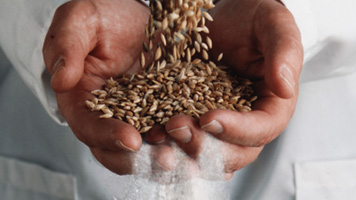Wheat Futures Surge in Overnight Trading; Money Managers Extend Bearish Bets on Corn, Beans
Category: Grains, Miscellaneous, Oilseeds
 (Agriculture.com) – 1. Wheat Futures Jump on Concerns of Frost Damage in Southern Plains
(Agriculture.com) – 1. Wheat Futures Jump on Concerns of Frost Damage in Southern Plains
Wheat futures surged in overnight trading on concerns that the hard-red winter wheat crop was damaged by frost over the weekend.
Temperatures dropped in the mid-20s for several hours in parts of the southern Plains, potentially causing damage to plants that lacked a protective layer of snow. In some areas, snow buried plants that had already headed.
Potential damage may shrink an historically small U.S. wheat crop. Growers are forecast to plant the least wheat in 108 years due to low prices and low profitability, according to the Department of Agriculture.
Wheat for July delivery jumped 9 cents to $4.41 ¼ a bushel overnight on the Chicago Board of Trade and Kansas City futures surged 14 ½ cents to $4.51 ¾ a bushel.
Soybeans gained 7 ¾ cents to $9.64 a bushel in Chicago. Soymeal rose $2.70 to $318.50 a short ton and soy oil added 0.11 cent to 31.82 cents a pound.
Corn futures for July delivery rose 4 ½ cents to $3.71 a bushel.
2. Speculators Extend Bets on Lower Corn, Bean, Wheat Prices Amid Rising Global Forecasts
Money managers extended their bets on lower prices for corn, beans and wheat last week, according to the Commodity Futures Trading Commission.
Speculative investors were net-short by 180,360 corn contracts in the seven days that ended on April 25, up from the CFTC said in a report. That’s the shortest they’ve been since the week ended Sept. 6.
Funds and other large investors were net-short 52,475 soybean contracts, up from 49,190 the prior week and the biggest such position since March 1, 2016, according to the government.
Investors have been betting more and more on lower corn and bean prices as global production and inventories increase.
The U.S. Department of Agriculture has pegged world corn production at a record 1.05 billion metric tons and inventories at 223 million. Soybean output worldwide is pegged at 346 million tons with stockpiles at 87.4 million tons, the USDA said in estimates last month.
Money managers increased net-shorts in soft-red winter wheat to 171,269 contracts, up from 154,345 the prior week, and to 17,616 contracts in hard-red winter wheat, up from 15,072 the previous week, according to the CFTC.
The weekly commitment of traders report from the Commodity Futures Trading Commission shows trader positions in futures markets.
The report provides positions held by commercial traders, or those using futures to hedge their physical assets; noncommercial traders, or money managers (also called large speculators); and nonreportables, or small speculators.
A net-long position indicates more traders are betting on higher prices, while a net-short position means more are betting futures will decline.
3. Record Floods Continue in Much of Eastern Midwest as Storm Moves East
Record floods will continue for the next several days in parts of the eastern Midwest as rivers remain high despite falling from their peaks over the weekend.
Major flooding will continue in portions of eastern Oklahoma, northern Arkansas, Missouri, Illinois and Indiana, according to the National Weather Service.
“Rivers will gradually recede over the next several days,” the NWS said in a report early on Monday.
The storm that dumped all the rain in the Midwest is now moving east in the Mid-Atlantic and northeastern U.S. where it’s expected to bring large hail, strong winds and possibly tornadoes, the agency said.




